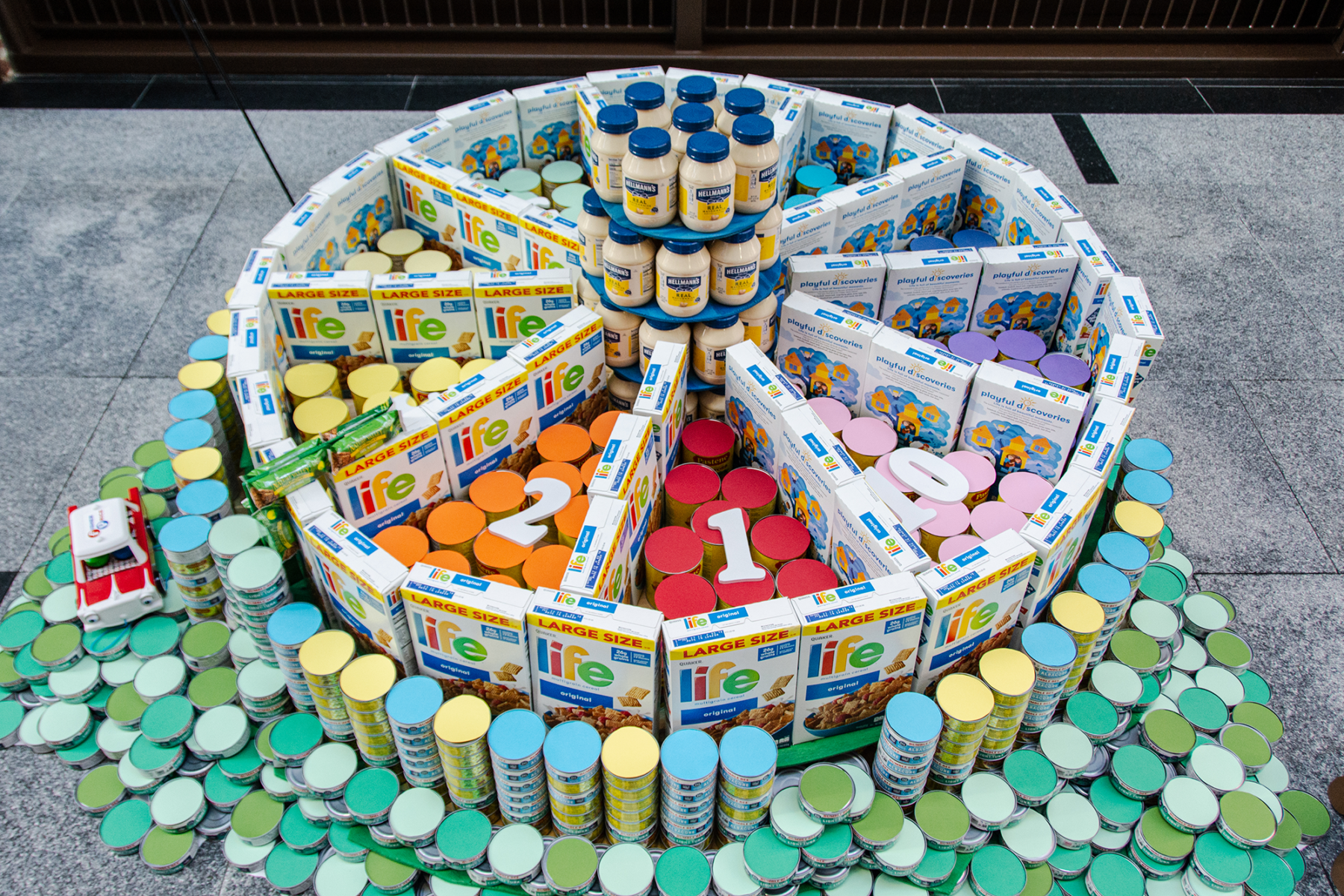BSA members and initiatives aim to combat food insecurity in Boston
Throughout the country, levels of food insecurity rose in 2020 as a
result of the COVID-19 pandemic, and conditions in Massachusetts have
been no exception. Data extracted
from a weekly survey showed that 12 percent of all households in the
Commonwealth were food insecure earlier this year, an increase from
pre-pandemic levels.
While things have slowly begun to improve in 2021, hunger is still a concern state-wide as vulnerable residents grapple with circumstances caused in part by glaring systemic issues. As Renée Loth noted in her coverage of the BSA's mayoral forum on the built environment, "nearly every challenge facing Boston is a design issue." It follows that there are design solutions to Boston's hunger crisis.
Just ask BSA member Jeremiah Eck FAIA. A landscape painter as well as an architect, last year Eck made an effort to use his creative skills for good.
"The pandemic put extraordinary pressure on homelessness and hunger, especially for children," said Eck. "During the darkest days of the pandemic, in order to help in some way, my wife, Lisa Hillson, and I started Art for Meals. The idea was simple: donate $500 to one of four designated organizations dedicated to alleviating hunger, and we will send you one of my landscape paintings for free, postage on us."
More than 30 paintings have been donated already. Even so, Eck
shows no signs of quitting anytime soon.
"We raised over $20,000, which translated into almost 200,000 meals," Eck added. "Our goal is to combine all the efforts into a single AIA-sponsored program."
At the same time, the BSA is expanding its commitment to equity and community
involvement, and Community + Collaborative Design (C+CD) projects are taking center
stage. As part of C+CD, the BSA is partnering with Food for
Free, a Somerville-based organization that engages in food rescue work
targeted towards those most at risk for hunger. The BSA has been on hand to help
facilitate planning and design services as the organization moves into a new distribution center, a larger space that is better-equipped to respond to rising need.
"Hunger has increased dramatically since the start of the pandemic and created challenges to safely accessing food," said Deb Veth, CFO of Food for Free. "FFF has had to come up with new, creative ways to distribute more food to more people in ways that keep them safe and healthy."
David Snell AIA is principal at PCA Design, the firm which served as
the design team for the project. "PCA’s work focused on improving Food
for Free’s program experience for staff, volunteers and donors, which
resulted in the design of a new Donor Lounge," said Snell. "This
space greets visitors when they arrive, doubles as a break space for
volunteers, and serves as the area for potential donors to learn about
the organization."
For the team at PCA, intentional design choices like this have strong
impacts. "Design transforms the way we see challenges like hunger and
poverty by providing real-life solutions that can help make complex
problems less burdensome in an impactful way," Snell continued.
"We
have expanded our physical capacity (warehouse) by more than three
times in the past 18 months. This has been critical to our ability to
effectively respond to dramatically expanding and changing food needs in
the community," added Veth.

This year also marks the in-person return of Canstruction Boston, an annual in-person exhibition and charity event that encourages architecture firms and other groups to build sculptures out of canned goods and other food items. At the end of the exhibition, all items are donated to the Merrimack Valley Food Bank (MVFB).
“We are so grateful for our ongoing partnership with Canstruction Boston, which has provided nearly 600,000 pounds of food (or nearly 462,000 meals) since 2011!" said Kelly Proulx, development & communications coordinator at MVFB. "Food insecurity continues to be a critical issue in our region, as we serve an average of more than 65,000 people each month through our hunger relief programs."
Canstruction is currently on view through November 5 at the Nelson
Court and Waterfront Square Lobbies at 280 and 290 Congress Street,
Boston. Interested community members can also browse the sculptures
virtually through viewing photos on the Facebook album
and voting for their favorite by hitting "like." Other ways to
participate include donating—MVFB accepts donations year-round, and the Canstruction fundraiser, also conducted through Facebook, is currently in full swing.
The upcoming holidays provide an opportunity to reflect on the work that's left to be done. Every year, the week before Thanksgiving is designated as Hunger and
Homelessness Awareness Week by the National Coalition for the Homeless
and the National Student Campaign Against Hunger and Homelessness. Visitors can discover local events and ways to get involved here.
Combating food insecurity in Boston and the surrounding area is still an uphill climb, but those on the front lines of the fight haven't lost sight of the goal.
"Hunger exists in every community. It's often invisible, and in many cases the problem is not necessarily access to food but to healthy food," Veth said. "While the pandemic will, at some point—hopefully!—end, we believe that the increase in the need for food will extend well beyond this time."
More resources
Where to Find Community Fridges in and Around Boston
Know any resources we missed? Contact us at [email protected].

